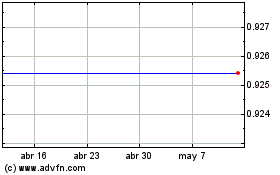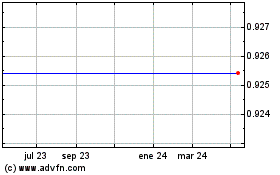Onboarding Towards Crypto Mass Adoption
19 Febrero 2022 - 12:00PM
NEWSBTC
NFTs are adding complexity and diversity to the blockchain
ecosystem, and this new wave of utility is attracting a much wider
audience. The blockchain-cryptocurrency sector is a little more
than a decade old and still fighting an uphill battle for
widespread acceptance. Those who have closely followed the
industry’s rise know its potential to solve the biggest problems
plaguing legacy financial systems, but before crypto can go truly
mainstream, it must first reckon with some of its own inherent
shortcomings. For starters, crypto-based transactions are
considerably slower than conventional payments, with the exception
of some cross-border use cases. Faster transactions are possible,
but not without a hefty price tag out of reach for many users. This
sluggish speed often means long waits for transactions to settle,
resulting in network congestion. As we witnessed with CryptoKitties
in 2017, scalability is a serious concern for existing blockchains
and protocols running on them. Beyond these technical limitations,
myths and misunderstandings abound in the blockchain-cryptocurrency
domain, which presents significant obstacles to onboarding. Those
skeptical about cryptocurrencies often perceive it as “magic
internet money” with little or no value in the real world, or
worse, a means for criminals to transact shady business outside of
the watchful eye of financial regulators. This is despite the fact
that just 0.34% of crypto-based transactions involve criminal
activity globally. Cryptocurrency is also frequently criticized for
its gluttonous energy consumption, with the average Bitcoin
transaction consuming twice as much energy as a typical U.S. home
uses in an entire month. Mass-scale Bitcoin mining operations
around the world consume enormous amounts of fossil fuels to power
their server farms, contributing to greenhouse gas emissions in our
atmosphere. Some companies have begun to partner with energy plants
to use excess energy that might otherwise be wasted. Bitcoin and
Ethereum are trying to resolve these issues through innovations
like the Lightning Network and Ethereum 2.0. Emerging blockchain
platforms are also introducing radical and promising enhancements,
but as a whole, mass adoption in the mainstream is still a distant
reality. In spite of these and other obstacles, the burgeoning
community of crypto enthusiasts have put tremendous effort into
spreading awareness and education—which is steadily coming to
fruition. Moreover, as innovators build user-friendly solutions to
improve the first-time experience of amateurs, we are gradually
moving towards broader adoption. Let’s take a look at some of the
major catalysts of this change. NFT Collectibles One of the most
successful and innovative discoveries to emerge from the blockchain
sector in recent memory is non-fungible tokens (NFTs). Although
NFTs have multiple applications, the oldest and perhaps the most
popular is their role as collectibles. NFTs caught the fancy of
crypto enthusiasts beginning in 2017 with CryptoPunks, and have
since become cultural artifacts, unfolding one of the most
important chapters in blockchain’s history. NFT-based collectibles
are not mere JPEG images sitting idle in their owner’s crypto
wallet. People are buying these assets to flaunt them on social
media as a sort of virtual status symbol. Realizing the enthusiasm,
Twitter has been working to offer users the ability to authenticate
their ownership of NFTs and show them off in your profile. NFTs
also have the potential to be much more than mere
collectibles—fractionalization is possible, for instance, and so
are DeFi derivatives. Torum is one company focused on growing the
NFT and Crypto Community and has recently taken investment from
KuCoin Labs. Torum’s NFT marketplace is powered by their token XTM,
which helps meet the NFT-centric needs of crypto communities. They
will be connecting users in a SocialFi (Social Finance) ecosystem
where cryptocurrency users and projects can collaborate and,
according to their twitter, already have close to 200,000 users.
Another market player lowering the barrier to entry to NFTs among
new and existing crypto users is Chronicle, a marketplace creating
authenticated digital collectibles for the world’s biggest brands,
including for stars of stage, screen, and television. Chronicle
makes it easy for users to buy, sell, trade, and gift officially
licensed NFT collectibles, even without technical knowledge, with a
user-friendly platform that accepts a multitude of payment options
including credit and debit cards. Play-to-Earn (P2E) Games
Blockchain-powered gaming is rapidly becoming a sensation, with the
combined market cap of top gaming tokens having peaked at over $52
billion. Traditional gamers are already familiar with the idea of
in-game assets, such as weapons, vehicles, or loot boxes, around
which entire in-game economies with corresponding real world value
have begun to spring up. By leveraging NFTs and other
blockchain-based innovations, decentralized protocols are taking
in-game assets (and gaming) to a whole new level. Unlike
traditional gaming, where assets are confined to individual games’
worlds, tokenized in-game assets have real monetary value
transcending the games’ virtual boundaries, and persist even if the
game ceases to exist. This development has given rise to a totally
new, user-centric gaming paradigm: Play-to-Earn or P2E. In our
pandemic-ravaged economy, people had to get creative to make ends
meet, and P2E games shot to fame in this climate. The prospect of
earning real money by playing games is indeed exhilarating, however
the focus on the economics of these virtual realms usually comes at
the expense of compromised gameplay and visuals. The sector is
evolving, though, and quite rapidly, with participatory and
people-centric titles like what we are seeing from Iron Sail,
Whydah’s GameFi hub that has received $25 million funding from
major blockchain ventures. Running on KardiaChain, Iron Sail’s
Mytheria is an NFT trading card game set to release in the coming
months that adds a whole new layer to the Play-to-Earn model:
Create-to-Earn. This allows artists to submit artwork to the game
community and even create games to generate revenue from their
work. Thetan Arena is another game from Iron Sail that, in a span
of 2 weeks since launch, accumulated a total of more than 5 million
users across all platforms. They reported a number of daily active
users has reached a peak of 2 million. User-Oriented Services &
Privacy Prioritization Disrupting user-oriented services like Data
Management Platforms (DMP) and Creator Economies is another
prominent outcome of leveraging blockchain technology.
Blockchain-based solutions can improve these services, providing
better security, privacy, and transparency, especially concerning
personal and sensitive data. This benefits not only enterprises and
content creators, but above all, the end-users themselves. We have
already moved beyond ordinary cryptographic encryptions in this
regard, thanks to companies like ARPA. ARPA CEO Felix Xu, who owns
more than 3,000 NFTs, attended Art Basel 2021 in Miami to network
with NFT artists. Xu said that ARPA’s Randcast technology uses
cryptographic methods to provide a secure, fast, and affordable way
for projects to generate onchain verifiable random numbers.
Verifiable randomness can improve the transparency of minting NFTs,
blockchain gaming, generative art, and more. The Tip Of The
Iceberg? Despite its nascency, the crypto sector has already
attained a market cap of $2.57 trillion though it has seen a
sell-off around the new year. As blockchain innovations continue to
evolve, crypto companies will devise new ways to onboard new users
to their platforms. With more investments coming into the crypto
industry all the time, companies will eventually adopt
people-friendly technologies for mass adoption. By any measure this
is an exciting time, and we’re still at the very beginning of the
blockchain and cryptocurrency story. As that story unfolds, we may
be about to witness an exponential and world-moving technology
boom, with echoes of the early days of the internet. Image:
Pixabay
Magic Internet Money (COIN:MIMUSD)
Gráfica de Acción Histórica
De Mar 2024 a Abr 2024

Magic Internet Money (COIN:MIMUSD)
Gráfica de Acción Histórica
De Abr 2023 a Abr 2024
